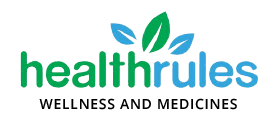
About Childhood Myopia
Myopia, often known as nearsightedness, can disrupt your child’s academics, sports, and daily activities. The inability to see distant things clearly might worsen with age if left untreated. Controlling your child’s myopia progression can enhance their long-term eye health and lower their chance of developing more severe eye issues as adults.
Childhood myopia develops when the eyes of a child grow excessively long from front to rear. This hinders the vision from properly focusing. As a result, faraway things look hazy, whereas close-up items are usually distinct.
Symptoms
If your kid has difficulty seeing the details of distant things, like writing on the board at school or lettering on traffic signs, they may have myopia. As a result, you may see them squinting or moving closer to distant things to improve their eyesight.
Risk Factors
Myopia runs in families; therefore, youngsters who have a nearsighted parent are more likely to be myopic. In addition, spending too much time reading or using a computer or mobile device and not spending enough time outside are risk factors.
Consultation
A paediatric optometrist will visit with you and your kid to evaluate your family’s eye history and environmental variables that may contribute to your child’s myopia. Myopia consultations are longer than standard eye exams to allow for a complete assessment and discussion of acceptable treatment choices and expectations.
Examination and Testing
Their eye doctor will evaluate your child’s visual acuity and eye health to see whether they are a candidate for therapy to reduce myopia progression. Eye measurements and retinal pictures will be collected, as well as a 3D map of their cornea. This information can be used to track your child’s eye health while they are undergoing therapy. Finally, your child’s eyes will be dilated to assist their doctor in determining the corrective prescription.
Treatment
If your kid is a candidate for myopia therapy, one of these solutions may be available to them.
Soft Multifocal Contact Lenses
Wearing multifocal soft contact lenses during the day can help to delay the eye elongation that causes myopia. The centre of each lens corrects nearsightedness, while the edges concentrate peripheral light rays. Young children can use multifocal soft contact lenses but need assistance inserting and removing them. Your health practitioner will fit your child with contact lenses and show you how to care for them properly.
Prescription Eyedrops
In youngsters who cannot or do not want to use contact lenses, a low-dose prescription eyedrop administered before night can reduce the growth of myopia. Atropine drops are prepared and shipped to your home by a specialised pharmacy. Your health practitioner will demonstrate to you and your kid how to use and store the drops.
Out-of-pocket Expenses
Medical insurance and vision plans may cover the price of a basic eye checkup, but they do not currently cover more thorough testing or myopia treatments. If your kid is a candidate, you can find a particular treatment plan so you can determine if myopia control is the best option for your child and family.



Average Rating